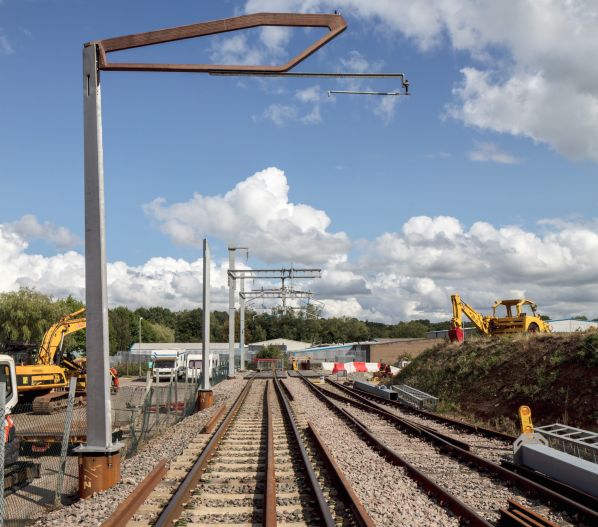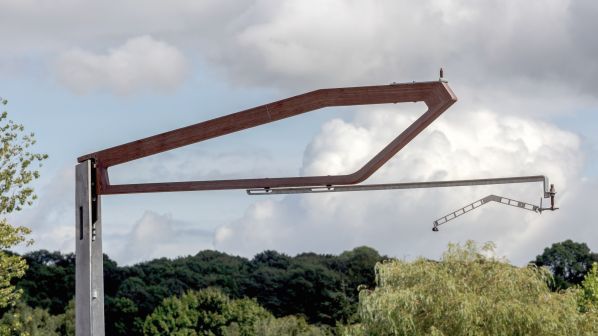The laminate’s electrical insulation properties allow conductors and supply cables to be fixed directly onto the structural arm without the need for ceramic insulating pots, reducing the size, complexity and number of connections while simultaneously encouraging structural and aesthetic freedom in terms of the size and shape of the cantilever.
The companies say the benefits of the patent-pending design include:
- reduced visual impact due to a 25% height reduction compared with standard designs
- the use of wood to provide a distinctive, attractive cantilever
- reduced installation time as the mast and cantilever can be erected together as a single unit from a road-railer or train
- complete interoperability with existing OLS systems by utilising standard connections and components already familiar to OLS engineers, and
- light-weight components for ease of installation which can be stacked for transportation and storage.

According to the two companies, a 70% reduction in the number of components also simplifies maintenance and reduces remedial engineering time, while the design incorporates a 32% saving in embodied carbon compared with typical alternatives.
“Our integrated OLS system has been designed to be fully compatible with existing, proven overhead catenary hardware for both conventional and high-speed railways, including HS2 in the UK,” says Mott MacDonald director, Mr Brian Duguid. “The design development has created a structure which is quick and simple to erect and able to achieve high installation rates. We have successfully completed two full-scale prototypes to confirm the system’s practicality and look forward to working with interested partners to introduce it on to working railway systems.”
“Railway catenary systems can have an enormous effect on the appearance of high speed and conventional railway lines as they pass through the landscape,” says Moxon director, Mr Ben Addy. “Our integrated OLS substantially reduces the visual impact of these systems, allowing them to sit more harmoniously within their environment.”

